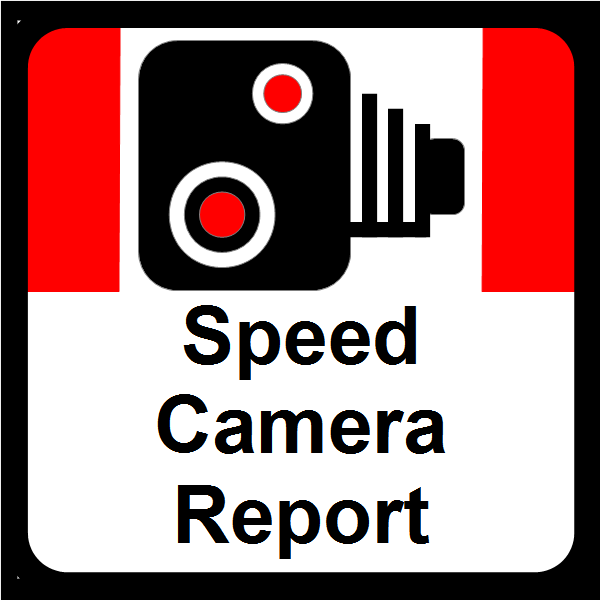Scientific trials
The RCT (randomised controlled trial) is a scientific trial designed to find the effect of an ‘intervention’ in a ‘complex environment’. In other words, RCTs would directly answer the question:
- “What effect do speed cameras have on the roads where they operate?”
Any competent engineer selecting camera sites would obviously use an RCT yet, surprisingly:
- No speed cameras have ever been deployed within scientific trials!
Contents:
2.1 Why do the speed camera operators refuse to run scientific trials?
2.2 Why not just see if collision rates were reduced at the camera sites?
2.3 How an RCT works is remarkably simple.
2.4 How might an RCT be performed to evaluate the effect of 10 new cameras?
2.5 How might an RCT be performed when removing cameras?
2.1 Why do the speed camera operators refuse to run scientific trials?
The government’s largest report (the 4YE) says that scientific trials are not run (p49):
- “Because this approach entails non-treatment of eligible sites, it can be difficult to justify, especially in large-scale studies of beneficial treatments“.
But eligible sites are already being left untreated, and this is actually acknowledged on the very same page:
- “…studies sometimes use a group of comparison sites that are similar to the study sites…”
- and a report “…used nearby untreated sites with similar collision frequencies for comparison”.
And how can they know that cameras are “beneficial“, if they refuse to perform the tests to find out (catch 22)?
Imagine if the medical profession refused to run scientific trials because that would delay patients getting a new “beneficial” drug! Scientific trials are essential because they prove whether a new drug really is beneficial, and we must demand similar standards for our safety when we use the roads.
- Just like new medical drugs, speed cameras should not be used without proper testing.
2.2 Why not just see if collision rates were reduced at the camera sites?
Because the reductions are not caused by the cameras. There are several factors influencing collision rates:
- RTM (regression to the mean).
- Trend (area-wide influences, eg numbers of vehicles, improved vehicle design, etc).
- Co-intervention (other measures also installed).
- Diversion of traffic.
- The cameras.
The major issue, though, is RTM. The Department for Transport has estimated that RTM may be larger than all other factors combined (4YE) therefore, in order to find the much smaller effect of the cameras, RTM has to be completely removed. The authorities have been unable or unwilling to do this.
- The speed camera operators have not produced a single report that has excluded all of the RTM.
- The speed camera operators have ignored every independent report that has excluded all of the RTM.
Therefore:
- Scientific trials are the only way to prove what effect the cameras are having.
2.3 How an RCT works is remarkably simple.
In an RCT, there are 2 groups. The ‘test’ group has the camera sites and the ‘control’ group has similar sites without cameras. The critical part of the RCT is that which group each site was assigned to was chosen at random. This means that the 2 groups are as similar as is possible, with the only difference being the cameras in the test group.
The cameras should therefore be the sole cause of any difference between the ‘test’ and ‘control’ groups.
- RCTs can be used for any site-based intervention (not just cameras) such as lower speed limits, traffic calming etc.
- RCTs are used to test new medical drugs in a particular form of RCT called a “double blind trial”.
2.4 How might an RCT be performed to evaluate the effect of 10 new cameras?
- Select 20 suitable sites.
- Arrange similar sites into pairs.
- Randomly select 1 site in each pair to be in the ‘test’ group, the other will be in the ‘control’ group.
- Operate cameras at the 10 test sites.
After some time (usually 3 years), we compare the 2 groups. Let’s say collisions reduced by 42% at the camera sites. If the ‘control’ sites saw a smaller reduction (say 32%), then the cameras have provided a benefit. But if there was a larger reduction at the ‘control’ sites (say 52%), then the cameras have contributed to more collisions.
To reduce random variation, simply run further RCTs and combine the results.
2.5 How might an RCT be performed when removing cameras?
Very easily. For example, if there are 212 fixed speed camera sites in Thames Valley then:
- Create 106 pairs, each having 2 similar sites.
- Randomly select one site from each pair and remove the cameras.
- Continue to operate the remaining cameras at the other 106 sites.
If after some time the change in collision rates where the cameras were removed was different to where they remained, then we would have clear evidence of what effect the cameras are having.
For what RTM is, and how to exclude it: RTM.

